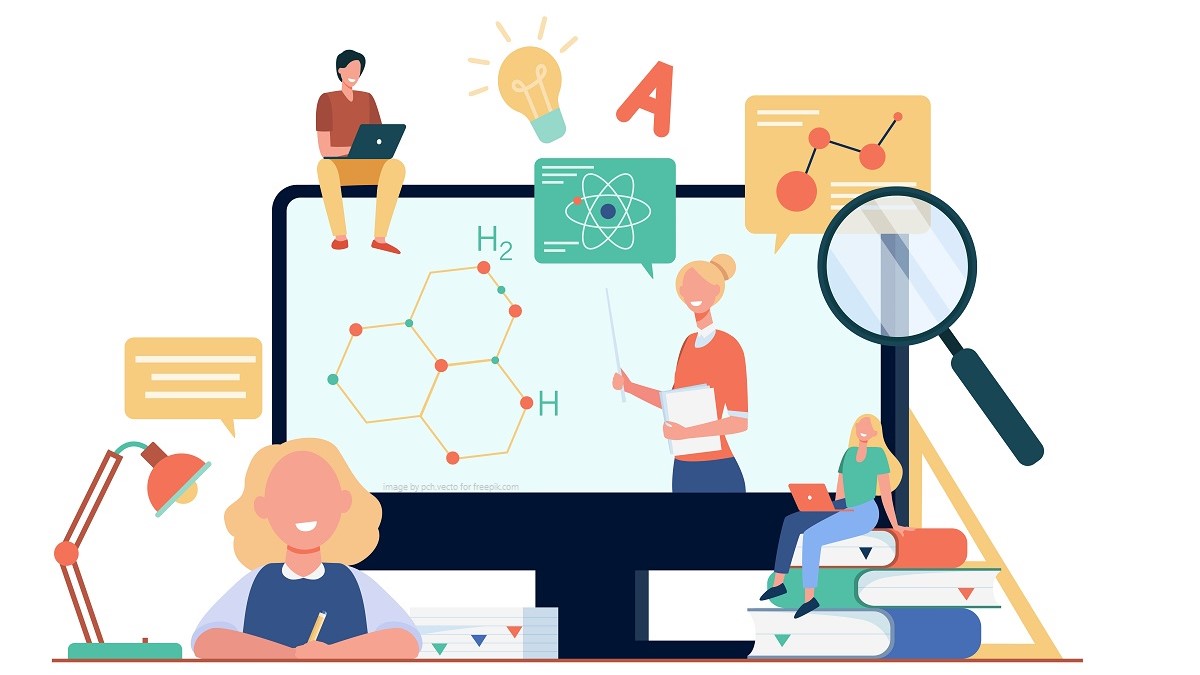
Pre-pandemic, the thought of incorporating flipped or blended learning, self-paced learning, video conferencing, and creating videos to teach key concepts or skills was seen as reserved mostly for virtual schools that catered to families that wanted an alternative to traditional brick-and-mortar schooling or for especially ‘high-tech savvy’ educators who could deftly handle quickly changing technology. Of course, the pandemic and consequent school closures changed all that, and educators, students, and parents had to learn to navigate online learning fairly quickly. For teachers who were comfortable with the tried and true, front-of-class style of instruction, switching to tech tools for creating, assigning, grading, and facilitating lessons was a steep learning curve. But here we are, over a year later, and many teachers have found that they have become incredibly adept at using these same tools if not more so.
The move to distance teaching and learning was also a welcome change for many students and parents. Students who were not active participants in their classrooms for a number of reasons such as lack of confidence found that asking and answering questions using a chat feature was a great way to ‘speak up’ in class. Parents who because of work or other responsibilities felt disengaged from teachers before school closures, now appreciated the increased opportunity to communicate about their child’s progress via email, video conferencing, and virtual back-to-school nights. These are just two changes that many educators feel will stay long after the pandemic. What are some others that school stakeholders feel will also stay?
5 Practices Educators Will Likely Keep
- Using Technology Tools
Many teachers discovered the essential role that technology could play when managing their workloads. They learned that G Suite and Microsoft for Education could help them organize their content and student assignments, track student work progress and participation, and even provide a means to create assessments (ex. Google Forms). Now that many teachers are back in classrooms, some have been fortunate to have interactive displays that allow for easy access to their Google Drive or One Drive so they can bring up material and share on a large screen that students can see from every part of the room. School staff benefited from ongoing training and support to help them grow their skills with Google Classroom and/or Microsoft Teams through relevant and interactive courses, such as those offered by Boxlight-EOS Education.
- Creating videos to teach
Several teachers already realized the value of creating their own instructional videos (you have probably heard of Sal Khan at this point), using them for flipped learning or having available for students to reference who may have missed class or need a refresher. Teachers are also finding out how valuable videos are for scaffolded and differentiated instruction. As the teacher works with one group, another group can watch a video on a different skill that. Think of it as ‘rotating groups’ for the digital age. Video creation could be as simple as screen recording to using a separate camera to record so students could see their teacher as if in the classroom.
- Small group learning for targeted instruction
Students adapted to online learning better when instruction was facilitated in small groups. There was increased opportunity for interaction with the teacher and shyer students felt more confident about participating in discussions. As mentioned earlier, chat features also helped students ask questions without feeling anxious about doing so in front of the whole class. A new online platform, MimioConnect®, allows teachers to not only create, assign, and track lesson progress but can also be used to facilitated synchronous virtual sessions. The MimioConnect platform has an inbuilt video conferencing tool that lets teachers and students privately message during a lesson so that teachers can answer questions or adjust during the lesson.
- Group collaboration online
Students were able to collaborate on activities and assignments via video conferencing (breakout rooms) while the teacher popped into the rooms to observe the conversation and check progress. If the teacher used applications such as Google Classroom or Microsoft Teams, assignments could be posted for groups to collectively revise, change, or add and respond to feedback. By working through shared documents, teachers could track conversations, improvements, and identify needs for clarification at the next synchronous session. Group collaboration online brought project-based learning to a new level.
- Video conferencing for office hours
Video conferencing has opened up more opportunities for parents and teachers to connect and discuss student progress and needs. Teachers have also set up virtual office hours to meet with students about questions they have on an assignment or project. The flexibility of scheduling face-to-face conversations has led to increased dialogue and building stronger relationships with students, parents, and other teachers. In addition, school leadership teams have been able to successfully facilitate larger events such as Art Fairs, STEM nights, Open House, Parent-Teacher Association meetings, and parent training sessions where attendance and participation have improved.
While the sudden and urgent need to change teaching and learning methods seemed insurmountable at the beginning of the pandemic, now seems wonderfully comfortable as teachers and students have gained a measure of confidence with technology they may not have had before. The move to incorporate greater innovation in all schools and classrooms for students seems much more feasible, and there are probably some tech savvier teachers out there who can help others along. Are you one of them?
To learn how Boxlight solutions can help your school or district innovate its learning spaces, go to boxlight.com.
Wondering how much success can be gained by using Boxlight technology? Read through a few of our success stories here: Case Studies and White Papers.


